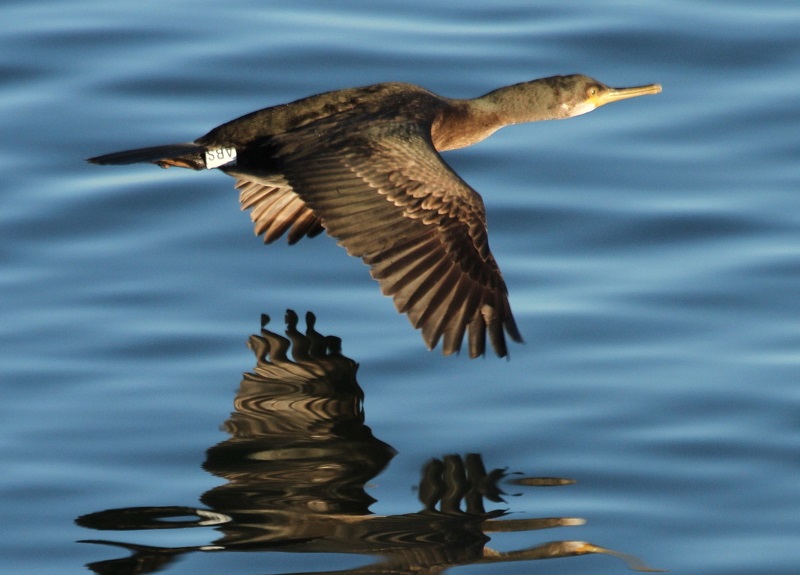European shags adjust flight style according to wind Strategy minimizes costs of takeoff and cruising flight

Researchers at the University of Tokyo and their colleagues have demonstrated that seabirds always take off into the wind and actively adjust their flight behavior in accordance with wind speed and direction to minimize the energy costs of takeoff and cruising flight.
Anecdotal field observations have long suggested that waterbirds take off into the wind, but there was no incontrovertible empirical evidence that this is the case. Aerodynamic theory predicts two characteristic speeds of flying birds: the minimum power speed, which requires the lowest rate of energy expenditure to keep flying, and the maximum range speed, which is faster than the minimum power speed, and is the speed at which the longest distance is covered per unit of fuel energy consumption.
The research group of Professor Katsufumi Sato from the University of Tokyo Atmosphere and Ocean Research Institute and researchers from Hokkaido University and the Centre for Ecology and Hydrology (UK) attached GPS loggers, to measure distance travelled, and accelerometers, to count and measure the strength of wingbeats, to the backs of 14 European shag (Phalacrocorax aristotelis) over 24-hour periods in June of 2008, 2009 and 2010. The empirical data clearly indicated that shags chose the maximum range speed to minimize the cost of transport.
“Recently developed tiny accelerometers and lightweight GPS loggers now enable researchers to follow seabird flights with sufficient accuracy and resolution to answer such questions,” says Professor Sato. He continues, “These findings may help us to understand the potential implications of climate change for shags and other birds engaged in flapping flight.”
Paper
, "European shags optimize their flight behavior according to wind conditions", Journal of Experimental Biology Online Edition: 2016/2/4 (Japan time), doi: 10.1242/jeb.131441.
Article link (Publication)
Links
Atmosphere and Ocean Research Institute
Department of Aquatic Bioscience, Graduate School of Agricultural and Life Sciences
Behavior, Ecology and Observation Systems, Atmosphere and Ocean Research Institute (Japanese)
Japanese Society of Bio-Logging Science (Japanese)








